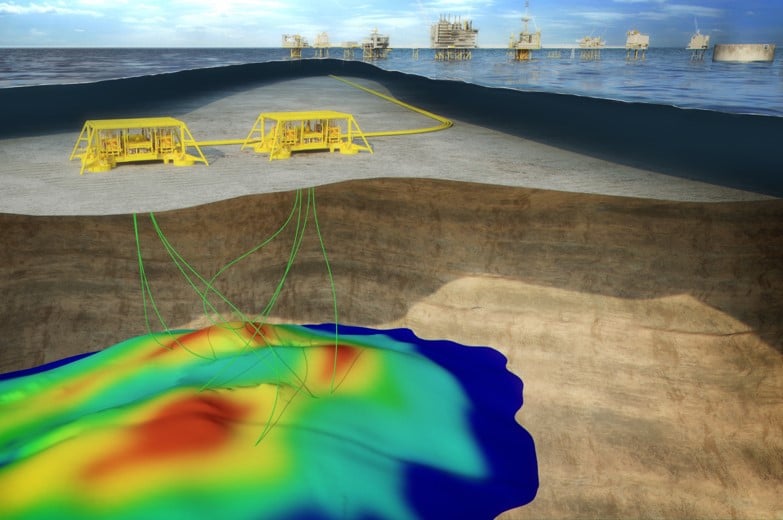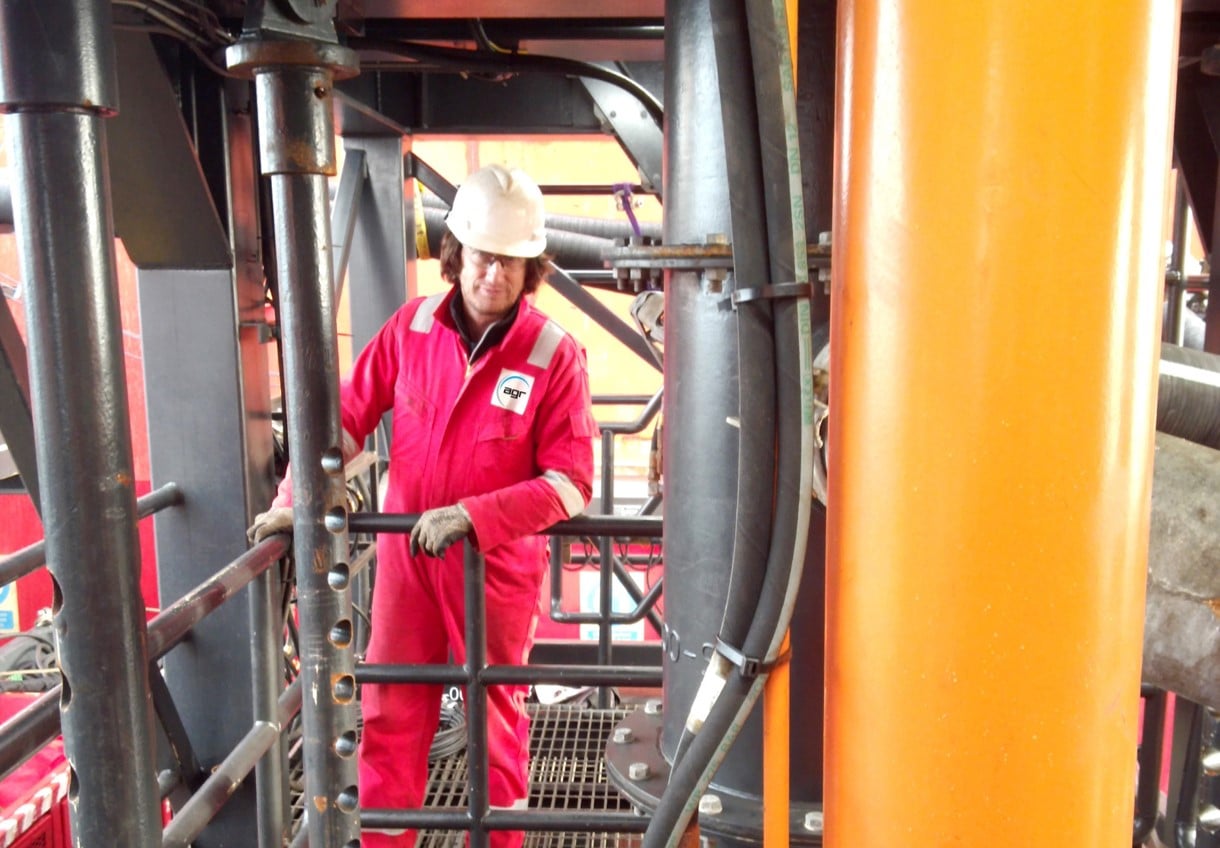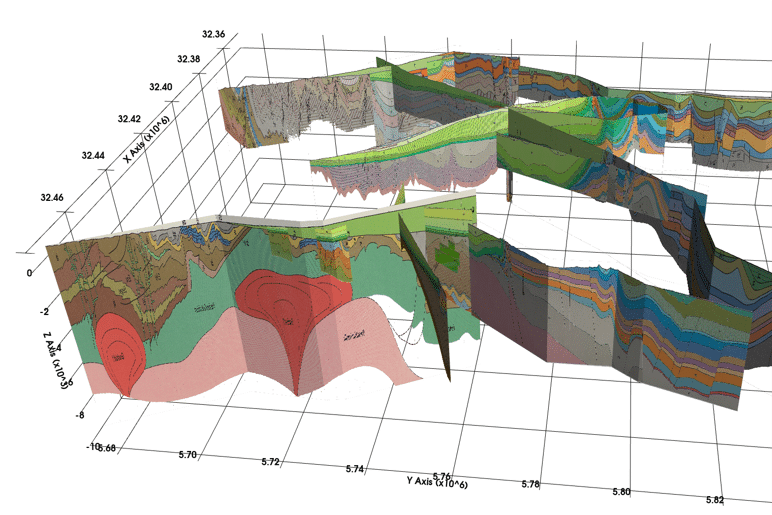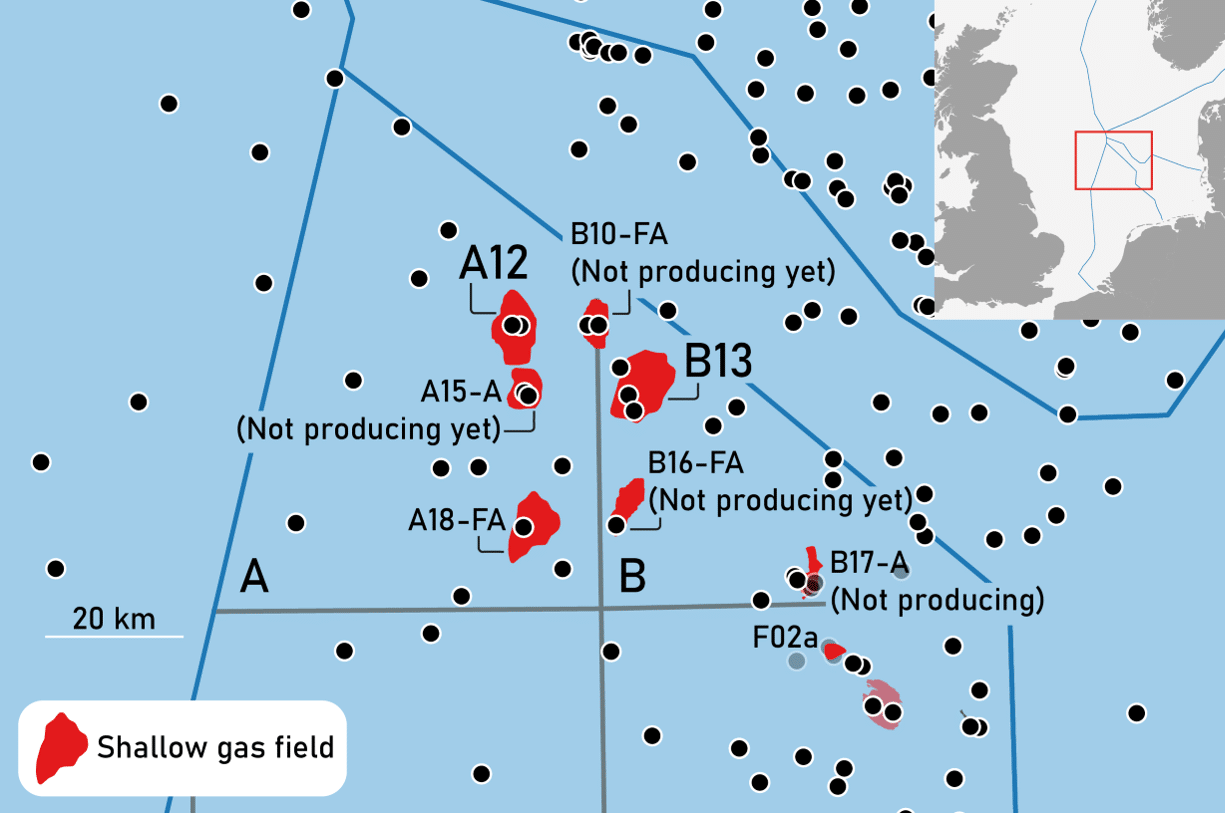Early July, gas production ceased from the Kinsale gas field in the Irish North Celtic Sea Basin, after 42 years in operation. This has not gone unnoticed in the media, as Ireland now depends on only one producing – and already declining – gas field to the west of the country, Corrib. In addition, the government decided to put a ban on offshore oil exploration, which further emphasises the dependency of future imports for Ireland.
In this article, we will take a closer look at the petroleum geology of the Celtic Sea Basins in general and the Kinsale field in particular. The key question we had was: “Why has exploration in the Celtic Sea Basins not resulted in more discoveries of the size of Kinsale?” As seen in many petroleum provinces around the globe, once a discovery has been made, more are to follow (see the recent Guyana spree as an example). This has not happened in the Celtic Sea Basins, despite drilling of around 60 exploration wells. In order to better understand the (petroleum) geological setting, Expronews spoke to Pablo Rodríguez-Salgado and Conor O’Sullivan from the Irish Centre for Research in Applied Geosciences (iCRAG) in Dublin. Pablo recently finished his PhD on the structural evolution of the Celtic Sea Basins and is currently working on a CO2 injection feasibility study for the same area. Conor is currently finishing his PhD on the geological evolution of the Irish Atlantic margin.
The Celtic Sea Basins are a complex of smaller ENE-WSW trending sub-basins, located on the continental shelf between Ireland and the northwest of France. The North and South Celtic Sea Basins are the largest of these subbasins. Superimposed on Palaeozoic fault trends that originate from the Caledonian amalgamation of Eurasia and the Variscan formation of Pangea, the basins are characterised by an up to 9 km thick succession of sediments deposited during Mesozoic rifting and subsequent thermal subsidence. Regional uplift during the Paleocene and basin inversion during the Middle Eocene to Miocene caused widespread erosion and basin inversion respectively, which is the reason the Upper Cretaceous outcrops at seabed in many places.

KINSALE DISCOVERY
Kinsale was found in the early days of petroleum exploration in the North Celtic Sea Basin, being only the third well in the area. Pablo explains: “Despite the poor quality seismic, mostly caused by high velocities within the Chalk, the Kinsale structure was identified early probably because of its size.” Well 48/25-2, drilled by Marathon Oil Corporation in 1971, found gas at a depth of 840 m below seabed, which is very shallow for North Sea standards. Following appraisal drilling, two production platforms were subsequently installed in 1977, Alpha and Bravo, from which production started a year later. Kinsale has produced a bit more than 1.76 Tcf (270 mmboe). “A possible reason of such a big number that has nearly duplicated the initial estimates, is that production could have taken gas from other adjacent structures”, Pablo adds.
The reservoir of the Kinsale field is a transgressive system of Lower Cretaceous (Aptian-Albian) fluvial Wealden sands at the base, transitioning into Greensand shelf sands moving upwards in the stratigraphy. The overlying Chalk is the main sealing unit whilst uppermost Jurassic to Lower Cretaceous Purbeck shales are thought to be the main source.

MORE FINDS
Following on from the success in Kinsale, about 60 more exploration wells were drilled in the Celtic Sea Basins over the course of about twenty-five years (1970-1995). Although a few gas and oil discoveries were made, two of which could be tied back to Kinsale (Ballycotton and Seven Heads), the size of these finds did not warrant development. Conor adds: “Ballycotton and Seven Heads, albeit quite small, benefited from being close to Kinsale and therefore could be developed relatively cheaply.” Most of the discoveries were made in the same relatively shallow reservoirs of Lower Cretaceous age (Greensand and Wealden Formations).
The main trapping mechanism for the Lower Cretaceous finds in the North Celtic Sea Basin are Eocene-Miocene inversion anticlines. But, as Pablo explains, “The formation of these anticlines simultaneously introduced a risk to the integrity of the overlying Chalk seal. Associated with the growth of the inversion structures, reverse faults developed to accommodate the compressional stress. In some cases, these faults propagated across the Chalk, thereby introducing a conduit for fluid migration and hydrocarbon leakage. In other cases, the faults do not propagate across the Chalk (they act as blind thrusts), allowing accumulation of hydrocarbons in the reservoirs below.”
A SERENDIPITOUS DISCOVERY?
Pablo says, “Due the fact that the quality of seismic data was so poor in the Chalk, faults are difficult to map. Especially in the days of 2D seismic, this is one explanation for the lack of success in the basin: many structures may have been drilled that experienced seal breach due to leakage of fluid along reverse faults”. Another important reason for the lack of success is the simple observation that the Kinsale anticlinal structure is just an exceptionally large structure that has not been mapped anywhere else within the prospective part of the North Celtic Sea Basin. In that sense, Kinsale must probably be considered as a serendipitous find rather than a play opener.
BIODEGRADATION
The shallow depth of the Kinsale gas reservoir, combined with a very high methane content and associated waxy oil accumulations, has led some researchers to suggest that the gas is a result of microbial oil degradation. In a paper published by Alexei Milkov in 2011 (Organic Geochemistry 42, 184-207), work from Colley et al. (1981) is cited wherein the Kinsale gas is suggested to be a mix of gas formed by biodegraded oil and thermally generated gas from a Jurassic source. Milkov speculates that Colley and co-workers may have been the first to formulate the concept of secondary microbial gas generation in the subsurface.
REMAINING POTENTIAL
Despite limited exploration success in the Celtic Sea Basins, we have already seen that several undeveloped oil and gas discoveries have been made in the Lower Cretaceous play. The most notable is the Barryroe oil and gas field, about 15 kilometres to the southwest of Kinsale. Also reservoired in the Wealden sands, volume estimates of this field range between 100 and 700 mmboe. However, the oil is waxy and the reservoir is compartmentalised. Providence Resources holds the licence and is seeking a farminee to help develop the field. In that light, it is interesting to note that on Monday 20th July, it was reported that Providence Resources is progressing farm out discussions with SpotOn Energy on Exploration Licence SEL1/11, which includes the Barryroe oil and gas field.
In addition to the Cretaceous Wealden-Greensand play, a working Jurassic petroleum system with Lower Jurassic Lias shales acting as the primary source rocks and time-equivalent sands being the reservoir has been proven in the Helvick discovery (49/9-2) to the NE of Kinsale. Because most exploration wells in the Celtic Sea Basins terminate in the Lower Cretaceous – Middle Jurassic, this petroleum play is underexplored and would deserve further testing.
HENK KOMBRINK





